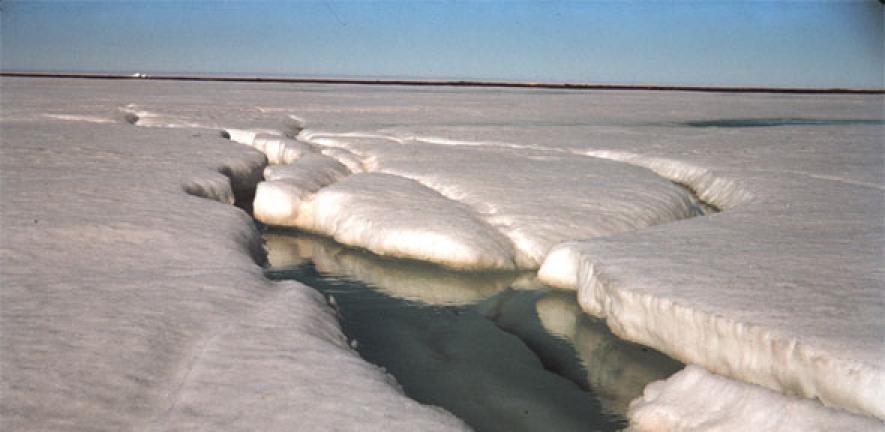
The 24 July news story about the potential cost of Arctic methane release has provoked widespread coverage, including a critique in the Washington Post. Here, Professor Peter Wadhams responds to some of the comments that were made.
The 24 July news story about the potential cost of Arctic methane release has provoked widespread coverage, including a critique in the Washington Post. Here, Professor Peter Wadhams responds to some of the comments that were made.
The 25 July post by Jason Samenow on the global economic impacts of methane emissions in the East Siberian Sea portrays the findings of our research as misleading, a statement with which I strongly disagree. Our work is based on a prediction of the magnitude and timing of methane emissions from the thawing of Arctic offshore permafrost by a scientist who has done extensive field work on this part of the ocean bed and is a globally recognized expert. We calculated the financial implications of these emissions for the world economy over a century and also considered the effect of the emissions on increasing overall global warming, obtaining a 0.6C figure by 2040. We rightly consider these to be substantial figures, which deserve wide circulation among climate scientists, and Nature and its referees agreed with us.
In our analysis we showed that the overall cost of a given volume of methane release is relatively insensitive to the rate of release or, within limits, its timing, BUT that the cost is roughly proportional to the overall volume of release. Thus, even if you worked with a different projection by a lesser qualified scientist than Shakhova, and revised down the figure and scale of the 60 trillion dollars accordingly, I suspect the cost will still be substantial – and that is one clear finding: The planetary cost of Arctic warming far outstrips any possible benefits to shipping or natural resource exploration.
In support of its skepticism about methane emissions the article quoted authors who wrote before the enormous retreat of summer Arctic sea ice and its oceanographic effects became so evident. The mechanism which is causing the observed mass of rising methane plumes in the East Siberian Sea is itself unprecedented and the scientists who dismissed the idea of extensive methane release in earlier research were simply not aware of the new mechanism that is causing it.
What is happening is that the summer sea ice now retreats so far, and for so long each summer, that there is a substantial ice-free season over the Siberian shelf, sufficient for solar irradiance to warm the surface water by a significant amount – up to 7C according to satellite data. That warming extends the 50 m or so to the seabed because we are dealing with only a polar surface water layer here (over the shelves the Arctic Ocean structure is one-layer rather than three layers) and the surface warming is mixed down by wave-induced mixing because the extensive open water permits large fetches. So long as some ice persisted on the shelf, the water mass was held to about 0C in summer because any further heat content in the water column was used for melting the ice underside. But once the ice disappears, as it has done, the temperature of the water can rise significantly, and the heat content reaching the seabed can melt the frozen sediments at a rate that was never before possible.
The 2008 US Climate Change Science Program report needs to be seen in this context. Equally, David Archer’s 2010 comment that “so far no one has seen or proposed a mechanism to make that (a catastrophic methane release) happen” was not informed by the Semiletov/Shakhova field experiments and the mechanism described above. Carolyn Rupple’s review of 2011 equally does not reflect awareness of this new mechanism.
Therefore I robustly defend our research and commentary, and hope that rather than dismiss the substantial risk such a methane release poses, the response might be to support more intensive research on this problem.
This work is licensed under a Creative Commons Licence. If you use this content on your site please link back to this page.





